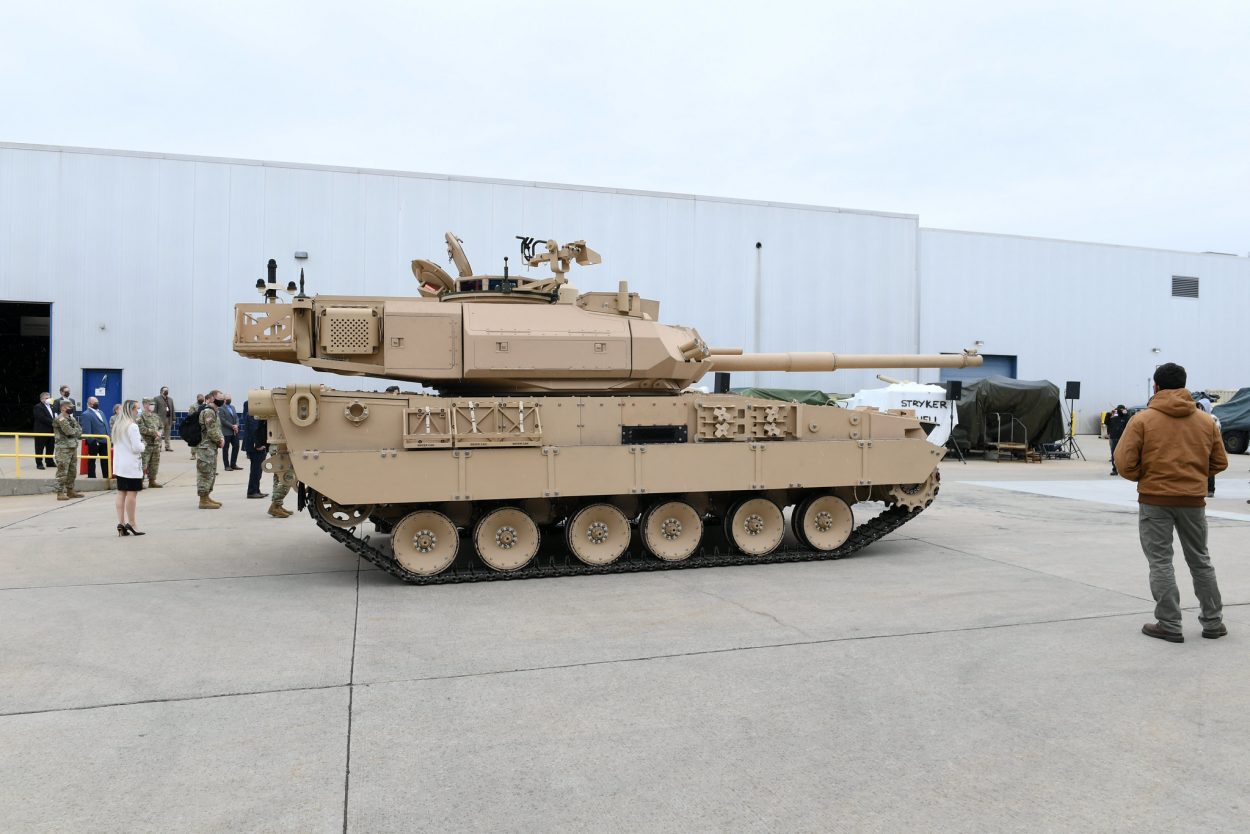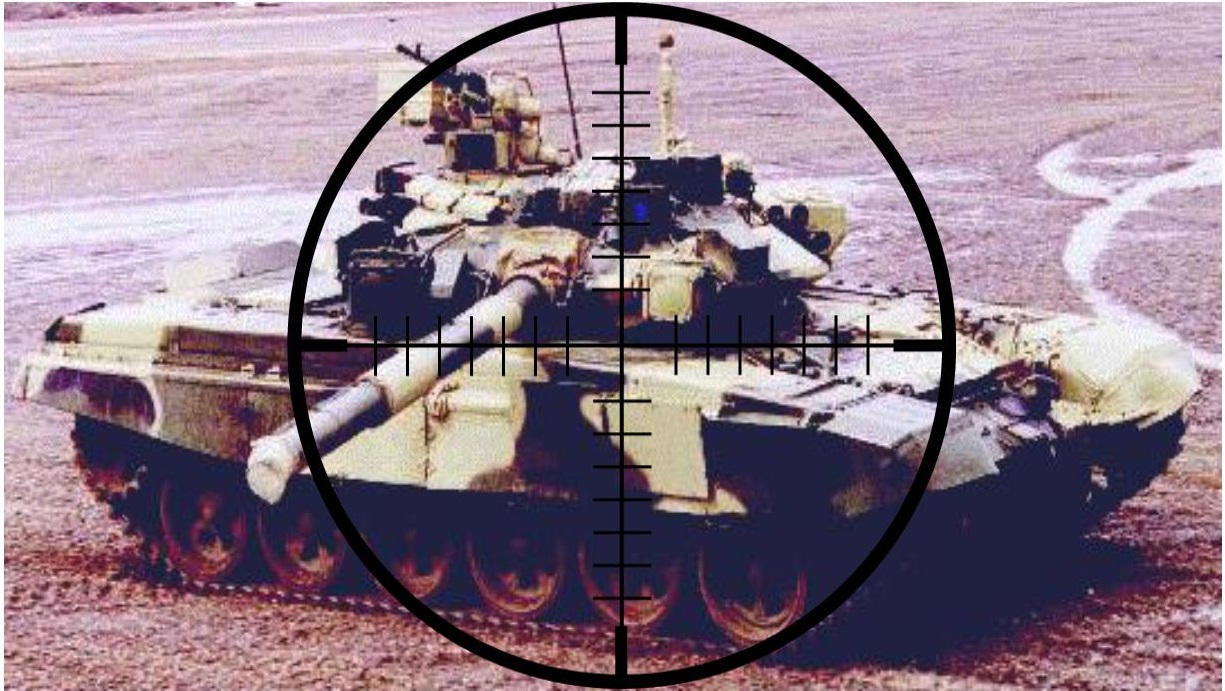The United States (US) Army is set to receive its first light tank for the first time since the Cold War – the General Dynamics Land Systems’ Mobile Protected Firepower (MPF) – according to a report in US Media.
Cruise Missile or Suicide Drone – Russia Shoots Down Invading Tu-143 Inside Its Airspace With Buk Missile
The contract worth up to $1.14 billion will cover an initial low-rate production order of 96 vehicles, with the Army expected to take delivery of the first examples, from an initial lot of 26 MPFs, by December 2023.
While the first unit will be fully equipped with them by 2025, the Army initially plans to buy 504 new light tanks by the end of 2035, whether this figure includes any of the preproduction examples that General Dynamics Land Systems (GDLS) already supplied for testing.
Based on the company’s Griffin II, it is slated to be formally named at the US Army’s annual convention in Washington DC. Unlike the Griffin’s 120 mm gun, it has a 105 mm gun mounted in a turret derived from the one on the M1 Abrams tank and a Fire Control System (FCS) system based on the M1A2 System Enhanced Package Version 3 (SEPv3) variant.
Griffin II was derived from the Austrian-Spanish ASCOD armored vehicle series, which also influenced the British Army’s troubled Ajax Infantry Fighting Vehicle (IFV).
The GDLS birthed the Griffin III, a contender for the US Army’s Optionally Manned Fighting Vehicle (OMFV) program, meant to replace the service’s Bradley fighting vehicles.
“The MPF program did exactly what the Army asked: to complete a competitive and accelerated rapid prototyping effort with Soldier touchpoints. MPF is a benchmark program, as the acquisition and requirement communities worked together to complete the (middle-tier acquisition rapid-prototyping) phase and move this system into production in just under four years,” said Doug Bush, the Assistant Secretary of the Army for Acquisition, Logistics, and Technology in a statement.

Glenn Dean, the US Army’s Program Executive Officer for Ground Combat Systems, told journalists, “This achieved everything we intended. We had two vendors. They were competitive.” After beginning the competitive tender in 2015 that involved commercial and user trials, the Army narrowed down on designs from GDLS and BAE Systems in 2018.
BAE Systems fielded a version of the 1980s Buford Armoured Gun System (AGS) developed for the Army to replace its last light tank, the Vietnam War-era M551A1 Sheridan.
The program was later canceled in 1996. The Sheridan was infamous for an overly complex 152 mm gun/missile launcher, and following retirement, and was retired in 997. A few Sheridans were used as target practice and mock enemy vehicles until 2003.
However, US Army planners are in an absolute flux regarding where to deploy the tank, given neither of the possible theatres the US might face – Europe and Western Pacific – suited for the tank.
Against Russia in Europe, the light tanks will be decimated by heavy Russian armor and rocket-propelled grenades. The war with China will be nearly entirely naval and air.
India Hunts For Light Tanks
Recently, the Indian Ministry of Defense (MoD) approved the design and development of light battle tanks for the private sector to push the ‘Atmanirbhar Bharat’ (self-reliant India) initiative.
Under the Make-1 category, the industry will undertake the project and be funded by the government in a stark departure from the direct purchase route.
Foreign defense contractors with ties with the Indian military have declared their intent to offer a tank to meet the Army’s needs. As a result, a deal between a local and international defense contractor for collaboration on the design and development of the tank could be struck shortly.
The need for a light tank was realized at the height of the standoff with the Chinese PLA in Ladakh that began in May 2020, where India had to move the heavier T-72 Ajeya tanks (45 tons) and the T-90 (46 tons).
Although effective against all Chinese tanks and crewed by experienced and well-trained Indian Cavalry, they still caused movement and logistical issues in the high-altitude air and inhospitable terrain at 17,500 feet. The treacherous mountain passes made transport a bane, adding to the logistical strain of maintaining 50,000 troops.
Things got worse in the winter of 2020 when the Indian Army had to sustain the high posture through the cold for the first time in 4 decades. Troops from both armies leave forward positions since the Line of Actual Control (LAC) is much calmer than the Line of Control (LoC) with Pakistan.

But the rude shock came when the People’s Liberation Army (PLA) tested the ZTQ-15 light tanks that effortlessly zipped through the Tibet and Xinjiang plains – but also looked too light, nimble, and vulnerable to heavy main guns above 105 mm.
Nevertheless, Indian Army planners realized it was a force multiplier and could serve devastating impacts on infantry positions if protected well by infantry and close air support.
Moreover, China’s logistical advantage owing to the extensive border infrastructure coming deep from within Tibet and Sichuan, allows it to replenish losses and keep units supported with spares. These operational difficulties associated with using heavy main battle tanks (MBTs) in mountain warfare have pushed India’s light tank program.
Depending on the armored protection configuration, the Chinese Type 15 tank weighs roughly 33-36 tons and is highly mobile and rapidly deployable in jungles, mountains, and riverine terrains.
Interestingly, it was primarily designed for reconnaissance and infantry support missions.
- The author can be reached at satamp@gmail.com
- Follow EurAsian Times on Google News




